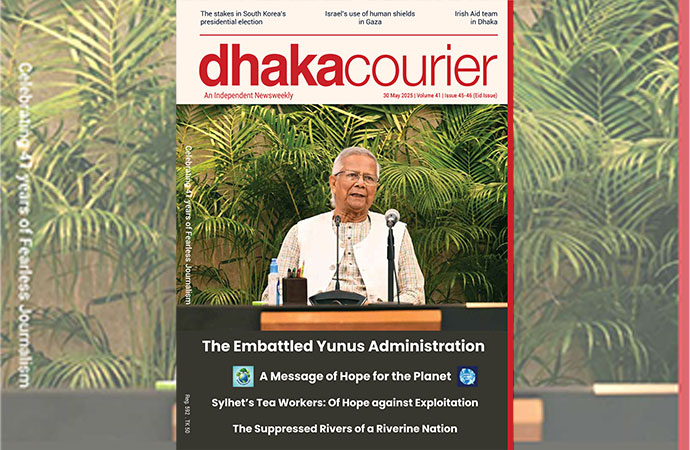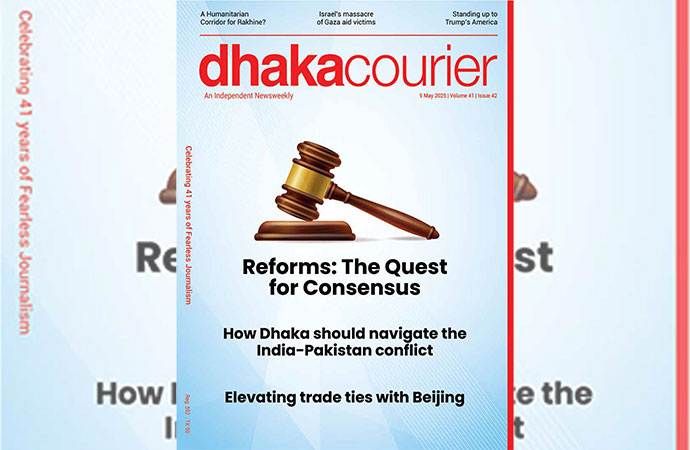Global

Image: Courtesy
Despite significant improvements in some areas, the world is still far from achieving most of the Sustainable Development Agenda’s 169 targets. With six years remaining until the 2030 deadline, it is crucial to develop and implement ambitious, inspiring, yet feasible solutions to humanity’s biggest challenges.
It is a truism in the business world that vision without execution is a hallucination, and execution without vision is futile. The same principle applies to global policy: ambitions without solutions are just hopes, while solutions without ambition lead to stagnation.
The Sustainable Development Goals (SDGs) for 2030 are a case in point. These 17 objectives and 169 underlying targets were unanimously adopted by all United Nations member states in 2015. They constitute an ambitious agenda to address global challenges like poverty, health, gender equality, labor, education, and climate change.
With six years remaining until the 2030 deadline, the world is far from achieving most of these goals. Despite significant improvements in some areas - such as a million more children reaching their fifth birthday each year - progress has been too slow in many others.
While financing gaps are rightly often cited as a key factor, the biggest obstacle to achieving the SDGs is the lack of systematic approaches to creating scalable solutions. Slow and steady gains can lead to significant advances over time, but if progress becomes too slow, the sense of achievement and hope for the future can dissipate.
Achieving systemic gains requires boldness. In 2015, the SDGs were launched with a call for transformation. But calling for transformative solutions is easier than developing them. Although markets are powerful drivers of innovation, we need solutions capable of tackling broader public interests. Progress often requires new forms of collaboration between public, private, scientific, and civil-society institutions, or even the creation of new ones. But many organizations have difficulties updating their goals or building partnership strategies. Siloed professional communities are difficult to unite, leaving vested interests and the forces of inertia to crowd out innovation. Consequently, partnership remains more an aspirational value than a skills-based discipline, and policy debates often prioritize ideology over practical solutions.
Against this backdrop, achieving the SDGs by 2030 requires new approaches that are audacious enough to inspire but also practical enough to be viable - concepts that capture the imagination while steering implementation debates toward tangible results. This could mean anything from a new global fund designed to ensure that digital cash transfers reach the world's poorest communities, or an "interspecies money" mechanism that leverages artificial intelligence to provide animals with a say on how digital currencies can be spent on their own protection. It could also mean developing a public data tool to help investors identify and avoid companies that use forced labor.
New technologies, institutions, and approaches all have the capacity to mobilize energy and expertise to achieve common, quantifiable objectives. Crucially, the fresh approaches we have in mind must convince people to abandon current practices and pool their creativity and resources toward a greater goal.
But big ideas rarely emerge on their own. Our respective professional experiences and collaborative efforts have taught us that innovative SDG solutions must be encouraged, cultivated, and supported. As co-chairs of 17 Rooms, a partnership between the Brookings Institution and The Rockefeller Foundation, we have worked with several dozen groups of extraordinary professionals around the world on initiatives related to all 17 goals. Having watched them experiment with various approaches, we have learned a few lessons about how to drive positive change.
First, venues for cross-sector cooperation on sustainable development remain too rare. We have been struck by the sense of novelty leaders from all sectors frequently express when encouraged to craft bold actions together to achieve even individual SDG targets.
Second, how ideas are shaped matters. To create platforms for the best ideas to emerge, the world needs tools, processes, and systems that can bring together diverse views, and yet the lack of available tools for developing multi-stakeholder solutions is startling.
Third, the development and adoption of big ideas should be interlinked. Too often, experts devise new solutions without understanding the realities faced by those who would be responsible for implementing them. Conversely, policymakers often fail to seek out innovative ideas and are rarely held accountable for not doing so.
A fourth lesson concerns the need to determine early on who will pay and how. Regrettably, the SDGs were launched without sufficient agreement on funding, making even small amounts of money difficult to secure. Without adequate financing, big ideas will remain just that - ideas.
Fifth, there is no substitute for leadership. Institutions and systems are crucial for large-scale deployment, but the passion and dedication of individuals championing big ideas are much more important than a perfect strategy or project. Since roadblocks are inevitable in an age of technological disruption, policy entrepreneurs must be as agile as their counterparts in the business world in navigating constantly shifting terrain.
To be sure, some people may argue that the current geopolitical climate is too challenging to pursue big ideas or develop systematic approaches to achieving the SDGs. We disagree. If anything, today's heightened tensions underscore the need to chart a better path forward. When the world seems stuck or off course, policy tweaks are unlikely to have a significant impact. New ideas, on the other hand, can foster a sense of opportunity and combat despair.
Lastly, private-sector and civil-society leaders are just as vital to generating big ideas as public officials. Big ideas can drive change at every level, from local councils to international forums. But achieving the SDGs requires new platforms that can foster innovation across sectors and empower relevant actors to advance solutions independently.
At 17 Rooms, we have learned from our successes and missed opportunities. With six years remaining until the 2030 deadline to achieve the SDGs, we are actively seeking big ideas. We hope others will adopt a similar approach and help all of us build platforms to facilitate innovative solutions.
From Project Syndicate

























Leave a Comment
Recent Posts
Enayetullah Khan to represent ...
Enayetullah Khan, Editor-in-Chief of United News of Bangladesh (UNB), ...
The tragedy in Ahmedabad touch ...
Air crashes are inherently international incidents, and the emotions t ...
Asset recovery a key focus; breakthroughs from talks ..
'It'll inspire youths to build Bangladesh they dream ..
UK envoy Sarah Cooke happy with Yunus’ visit to Brit ..
Prof Yunus honoured with prestigious Harmony Award b ..